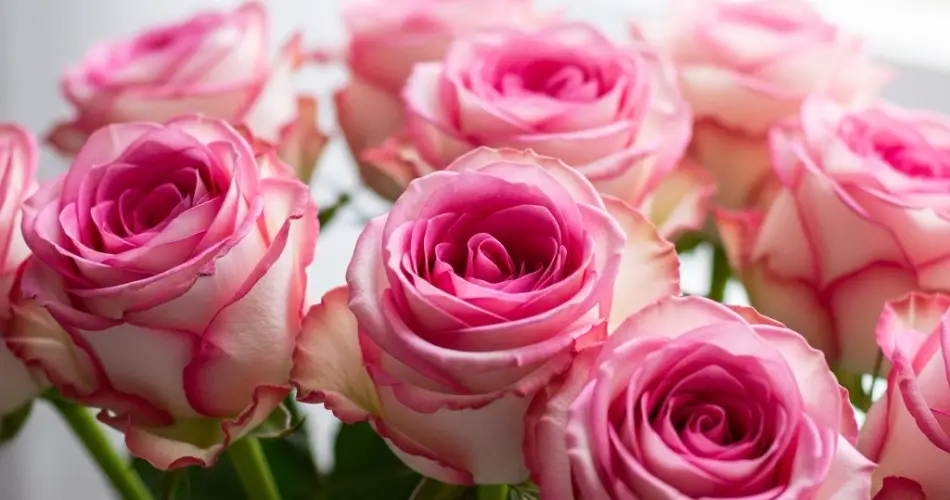Roses are one of the most cherished garden plants, celebrated for their fragrance, color, and romantic blooms. So when your rose bushes grow leaves but fail to produce flowers, it can be both disappointing and frustrating. Fortunately, rose blooming issues are usually linked to a few common causes—most of which can be easily corrected with some thoughtful adjustments.
If your roses aren’t blooming, here’s a detailed guide on why it might be happening and what you can do to encourage beautiful, healthy blooms.
1. Insufficient Sunlight
Roses are sun-loving plants and need at least 6 to 8 hours of direct sunlight daily to thrive. Without enough light, they may produce healthy foliage but few or no flowers.
What to do:
Ensure your rose bush is planted in a sunny location. If nearby trees or structures have started to shade the area, consider trimming branches or relocating the plant during the dormant season.
2. Improper Pruning
Pruning roses incorrectly—or not at all—can hinder flowering. Old or dead wood and spent flowers can consume the plant’s energy, preventing the formation of new buds.
What to do:
Prune your roses in late winter or early spring before new growth starts. Remove any dead, damaged, or weak canes and trim the plant to shape it and encourage airflow. Also, deadhead faded blooms regularly throughout the growing season to promote continuous flowering.
3. Too Much Nitrogen
Excess nitrogen causes roses to grow lush, green leaves at the expense of blooms. This often happens when roses are fertilized with a high-nitrogen formula or when they are planted near lawns that are frequently fertilized.
What to do:
Use a balanced or bloom-boosting fertilizer with higher levels of phosphorus, such as a 5-10-5 or 4-8-4 mix. Apply according to package directions during the growing season, and avoid over-fertilizing.
4. Lack of Nutrients
While too much nitrogen can be a problem, a lack of essential nutrients—especially phosphorus and potassium—can also prevent blooming. Roses are heavy feeders and need a well-balanced diet to perform at their best.
What to do:
Feed your roses regularly with a rose-specific fertilizer or organic options like compost tea, fish emulsion, or well-rotted manure. Apply every 4–6 weeks during the growing season and stop fertilizing about 6 weeks before your expected first frost date.
5. Improper Watering
Both overwatering and underwatering can stress rose plants and reduce flower production. Waterlogged roots lead to rot and poor nutrient uptake, while dry soil can cause bud drop or slow growth.
What to do:
Water deeply once or twice a week, depending on weather and soil conditions. Aim to moisten the soil to a depth of at least 6 inches. Use mulch around the base of the plant to retain moisture and suppress weeds.
6. Pest or Disease Problems
Common rose pests such as aphids, thrips, and spider mites can damage flower buds or new growth. Diseases like black spot or powdery mildew can also stress the plant, diverting energy from blooming.
What to do:
Inspect your roses regularly for signs of pests or disease. Remove infected leaves, use insecticidal soap or neem oil for pest control, and maintain good airflow around the plant by spacing and pruning properly. Healthy plants are more likely to bloom reliably.
7. Wrong Variety or Rootstock Issues
Some rose varieties are not heavy bloomers by nature. Others, especially those grafted onto vigorous rootstock, may send out suckers (non-flowering shoots from below the graft) that suppress flowering.
What to do:
Know the variety of rose you’re growing and what to expect in terms of flowering. If your plant sends out suckers from below the graft union, remove them promptly to redirect energy to flowering canes.
8. Age and Establishment Time
Young rose bushes or those recently transplanted may not bloom right away. Roses often spend their first year establishing roots and foliage, with more prolific blooming starting in the second year.
What to do:
Be patient with new roses. Focus on building healthy roots with consistent care. Avoid harsh pruning in the first season and support early development with light, balanced feeding.
Final Thoughts
If your roses aren’t blooming, take a moment to assess their location, care routine, and overall health. Often, a small change—such as more sunlight, proper pruning, or balanced feeding—can make a big difference. With a bit of attention and the right growing conditions, your roses will reward you with the blooms you’re hoping for.
Whether you grow heirloom varieties, climbers, or compact floribundas, proper care is the key to helping your roses reach their full flowering potential season after season.



